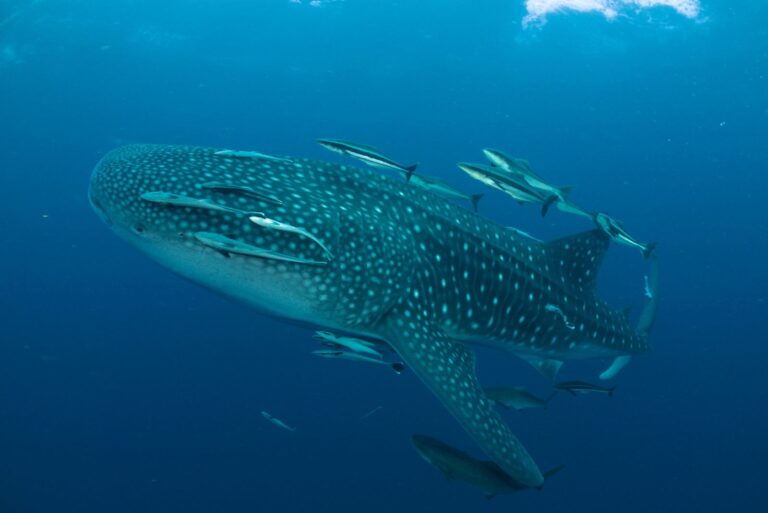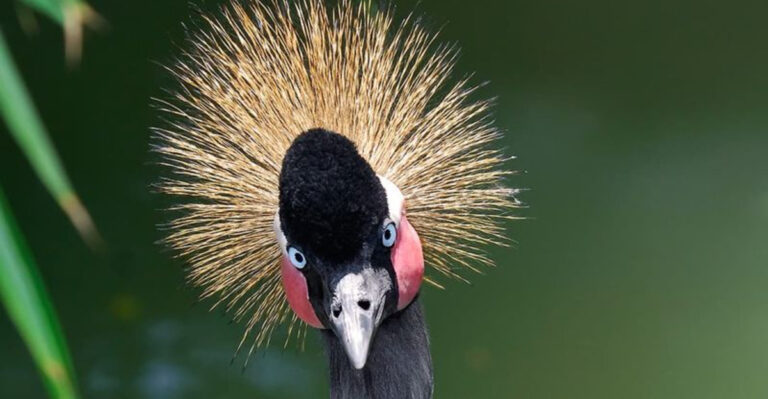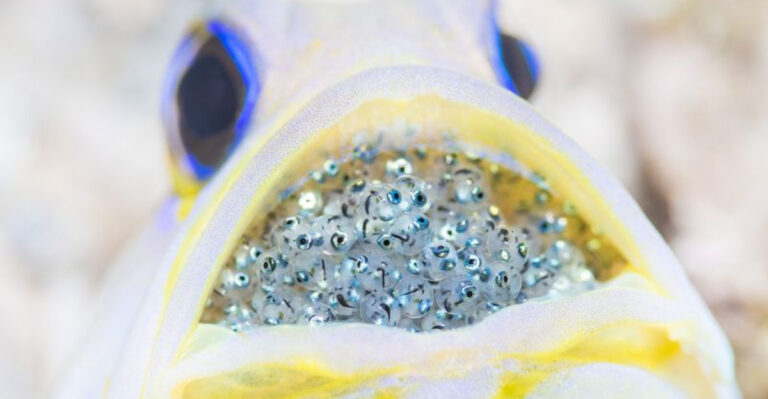20 Common Snakes You Might Spot In Your Backyard
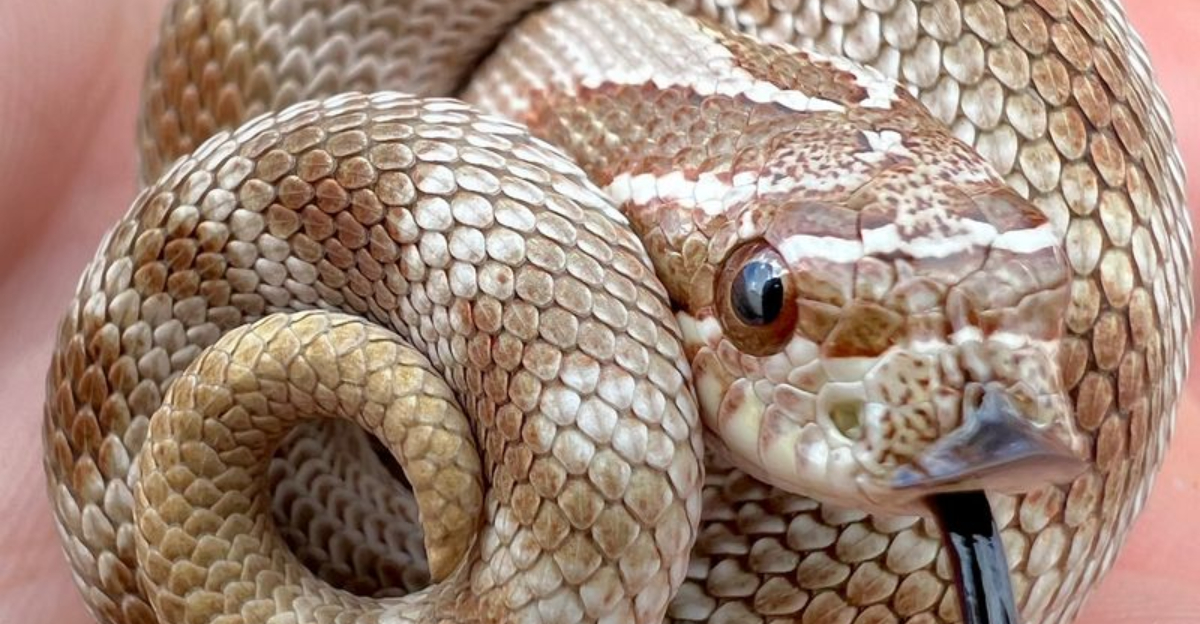
Backyards are often home to a wide variety of wildlife, and snakes are no exception.
While not everyone may be excited to see these legless reptiles, many are harmless and play an important role in maintaining the balance of the ecosystem.
In this list, we’ll introduce you to snakes you might find in your garden.
1. Coachwhip Snake
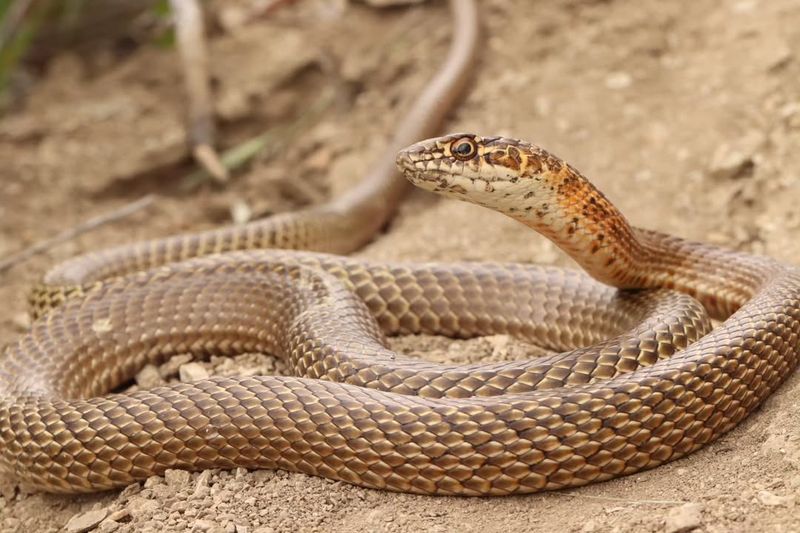
The Coachwhip Snake is a fascinating reptile that can reach impressive lengths.
Known for its incredible speed and agility, this snake is often seen slithering swiftly through open fields and backyards.
Its name comes from the braided appearance of its scales, resembling a coachman’s whip. The color varies from light tan to deep black, depending on the environment.
Although non-venomous, the coachwhip’s alert nature keeps it on guard. It’s a master of camouflage, making it a stealthy visitor in suburban areas. Observing one can be a thrilling experience for nature lovers.
2. Red-Bellied Snake
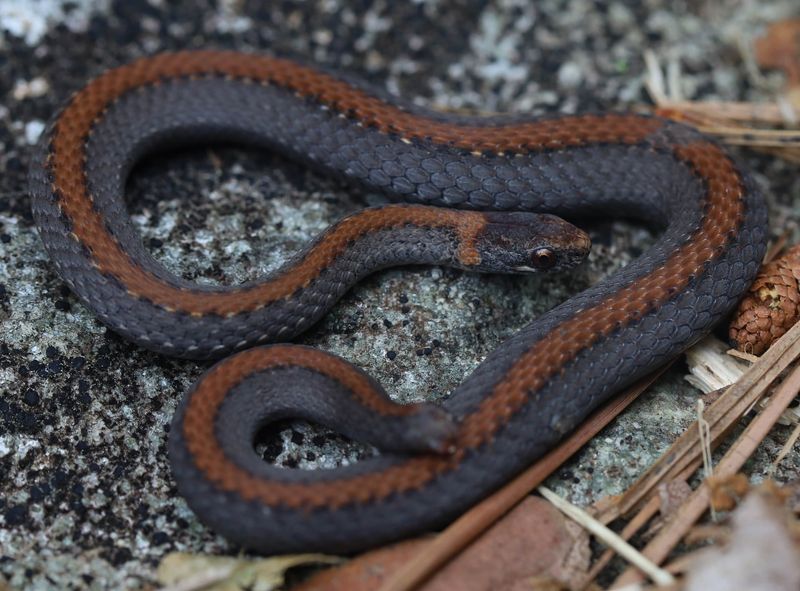
Red-bellied snakes are small, non-venomous reptiles that thrive in shaded or forested areas of the backyard.
Named for the distinctive red or orange color on their bellies, these snakes primarily feed on slugs, snails, and insects, contributing to natural pest control.
Shy and secretive, they often hide under logs or leaf litter. If you spot a red-bellied snake, admire its vibrant coloration and appreciate its role in maintaining a balanced garden ecosystem.
These harmless snakes play an important part in keeping your backyard healthy and thriving.
3. Bull Snake
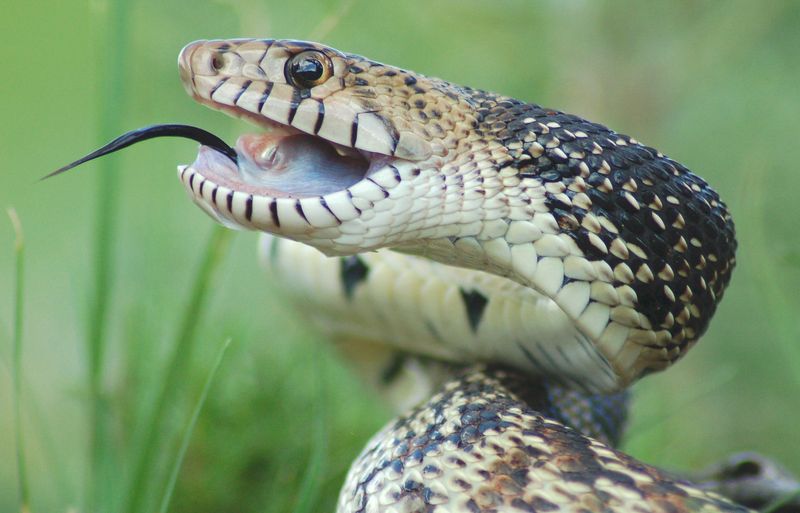
The Bull Snake, often mistaken for rattlesnakes due to its appearance, is a harmless but fascinating creature. Known for its loud hissing and tail vibrations, this snake mimics more dangerous species to deter predators.
Its sturdy build and bold patterns make it an impressive sight. Commonly found in fields, forests, and sometimes backyards, the bull snake plays a crucial role in controlling rodent populations.
Though its defensive behavior might startle, it’s a non-venomous snake. Observing a bull snake in its natural habitat offers a unique glimpse into the ecological balance of your backyard.
4. Garter Snake
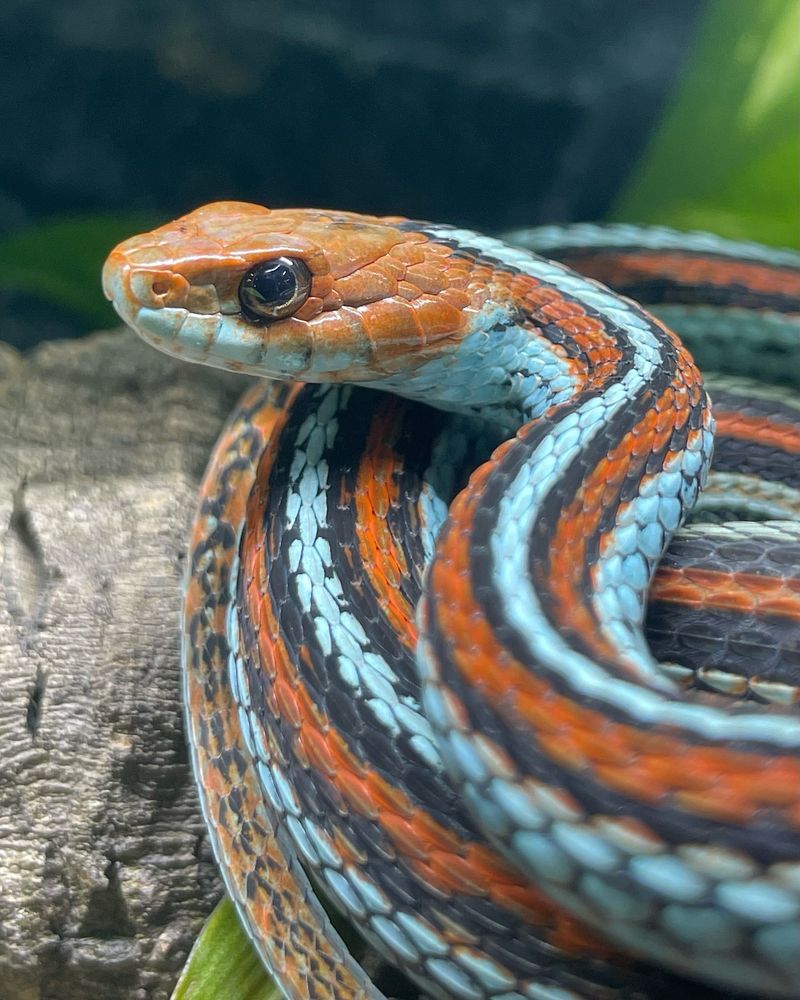
Garter snakes are one of the most common backyard visitors, easily recognized by their distinctive yellow stripes.
These non-venomous, docile snakes thrive in grassy areas, where they hunt small prey like frogs and insects.
Found all across North America, garter snakes are natural pest controllers, making them a welcome sight for gardeners.
While their appearance might catch you off guard, they play an important role in maintaining a balanced backyard ecosystem.
If you spot one, take a moment to admire it from a distance and appreciate its contribution to your garden’s health.
5. Rat Snake
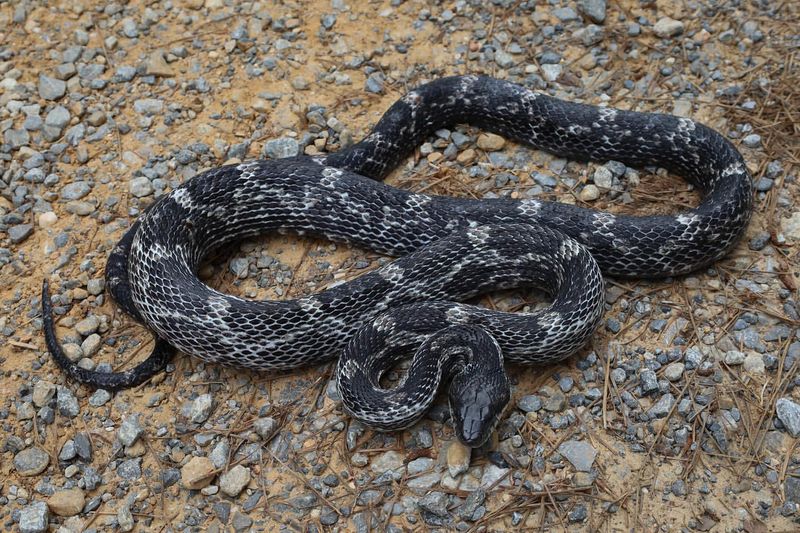
Rat snakes are a common sight in backyards, known for their sleek black appearance and impressive size, sometimes reaching up to six feet.
Despite their intimidating looks, they’re non-venomous and pose no harm to humans.
These excellent climbers are often found in trees or tall shrubs, hunting birds and their eggs, and they’re fantastic at controlling rodent populations.
Shy by nature, rat snakes will usually avoid humans, so if you spot one, give it space and appreciate its role in maintaining a balanced backyard ecosystem.
These snakes are natural pest controllers, making them valuable allies in keeping your yard healthy.
6. Corn Snake
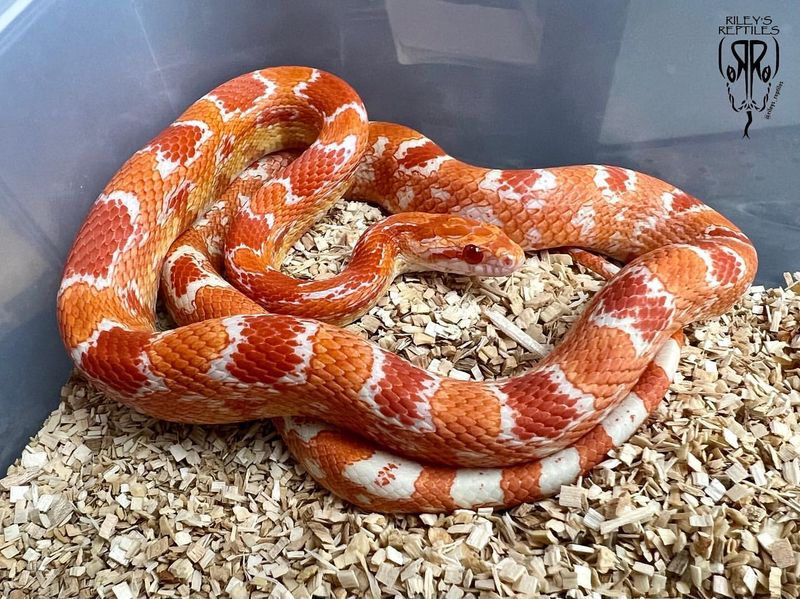
The corn snake, with its vibrant orange and red scales, is a stunning addition to any backyard.
Non-venomous and known for their docile nature, these snakes are often kept as pets due to their beautiful coloration.
Found primarily in the southeastern U.S., corn snakes are skilled climbers and love basking in sunny spots while hunting small rodents and birds.
Their presence is a natural way to control pests, especially rodents, making them a welcome visitor for gardeners.
If you spot a corn snake, take a moment to admire its beauty and appreciate its role in maintaining a healthy backyard ecosystem.
7. Milk Snake
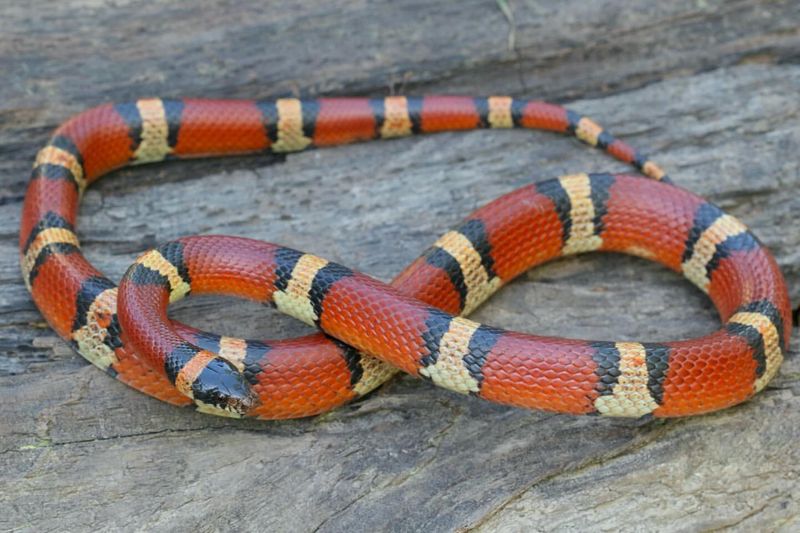
Milk snakes are a colorful addition to any backyard, with striking red, black, and yellow bands that make them stand out.
Often mistaken for the venomous coral snake, milk snakes are harmless and pose no threat to humans.
These secretive snakes tend to hide under logs or leaf litter during the day, becoming more active at night as they hunt small mammals, birds, and reptiles.
They play an important role in controlling rodent populations, making them valuable to have around.
If you spot one, admire its vibrant colors from a distance and appreciate the role it plays in keeping your backyard ecosystem in balance.
8. King Snake
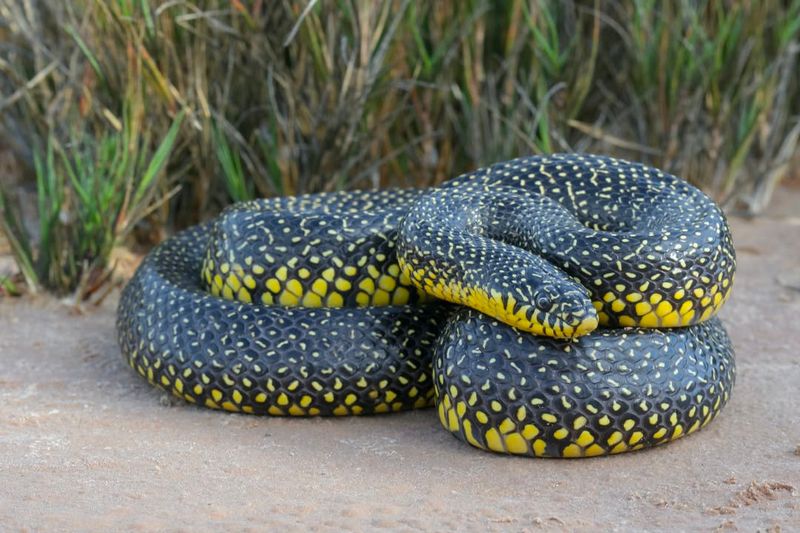
King snakes are known for their striking black and white bands and powerful hunting abilities. Often mistaken for venomous species like the coral snake, king snakes are harmless to humans.
They earned their name because they eat other snakes, including venomous ones, making them great natural controllers of snake populations.
Though non-venomous, king snakes are typically shy and avoid human contact.
If you spot one, give it space and appreciate its role in maintaining a balanced backyard ecosystem, as their presence is a sign of a healthy environment.
9. Black Racer
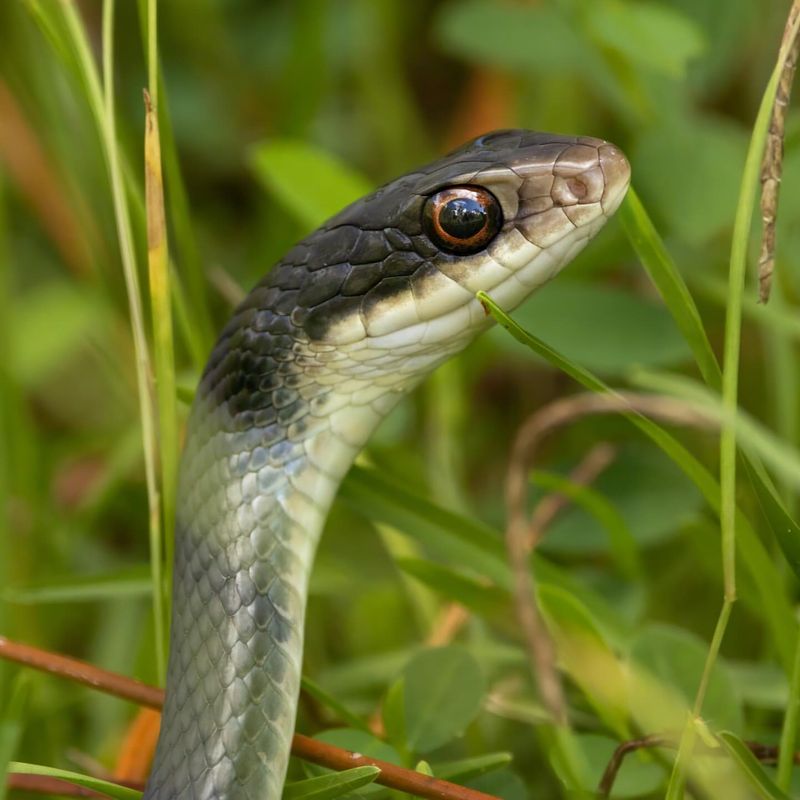
Black racers are fast-moving, slender snakes often seen darting across open areas.
Known for their speed and agility, they are excellent hunters, feeding on small rodents, birds, and insects, which helps control these populations in your backyard.
Despite their impressive hunting skills, black racers are harmless to humans and prefer to avoid contact.
If you spot one, enjoy watching its swift movements from a distance and appreciate its role in maintaining a healthy ecosystem. Their presence is a sign of a thriving, pest-controlled backyard environment.
10. Water Snake
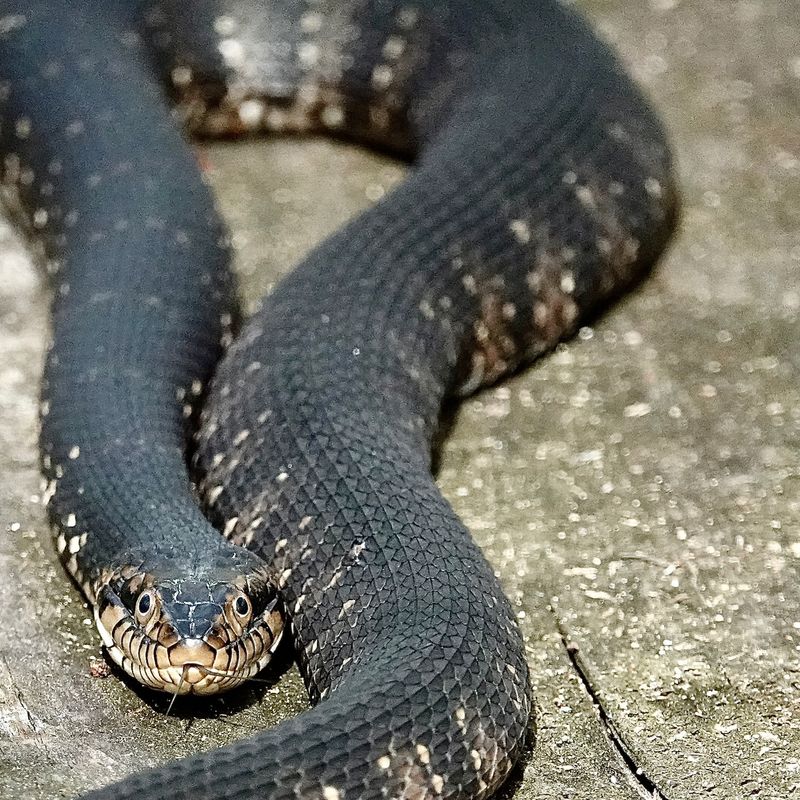
Water snakes are commonly found near backyard ponds or streams, often mistaken for the venomous cottonmouth, but they are non-venomous and not aggressive.
Thriving in aquatic environments, they can be seen swimming gracefully through the water, hunting for fish and amphibians.
Their presence is a good sign of a healthy water ecosystem.
While they may seem intimidating with their size and color pattern, water snakes are harmless and play a vital role in controlling fish and frog populations, keeping your pond balanced.
If you spot one, simply admire it from a distance and let it continue its natural aquatic journey.
11. Plain-Bellied Water Snake
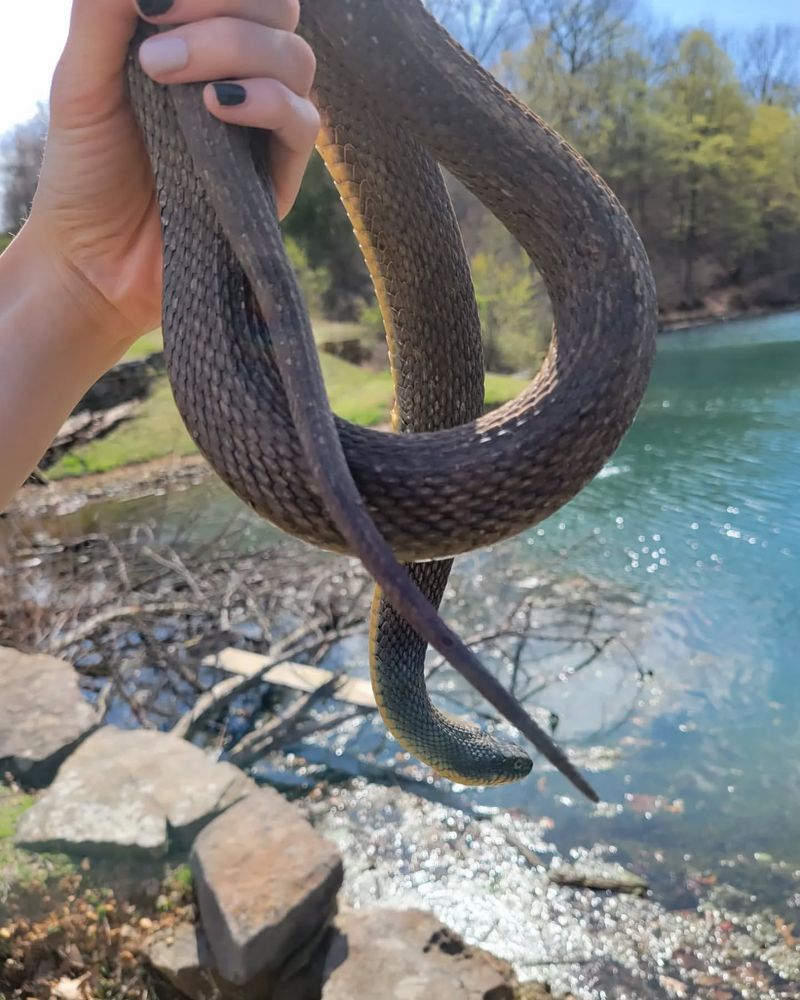
Plain-bellied water snakes are semi-aquatic, non-venomous snakes commonly found near backyard ponds or streams.
These excellent swimmers are often mistaken for more dangerous species but are harmless to humans. They feed on fish, frogs, and other aquatic creatures, helping to control these populations.
Shy by nature, they prefer to avoid human interaction, but their presence signals a healthy aquatic ecosystem.
If you spot one in your pond, enjoy watching it glide through the water and appreciate its important role in maintaining balance in your backyard’s natural beauty.
12. Hognose Snake
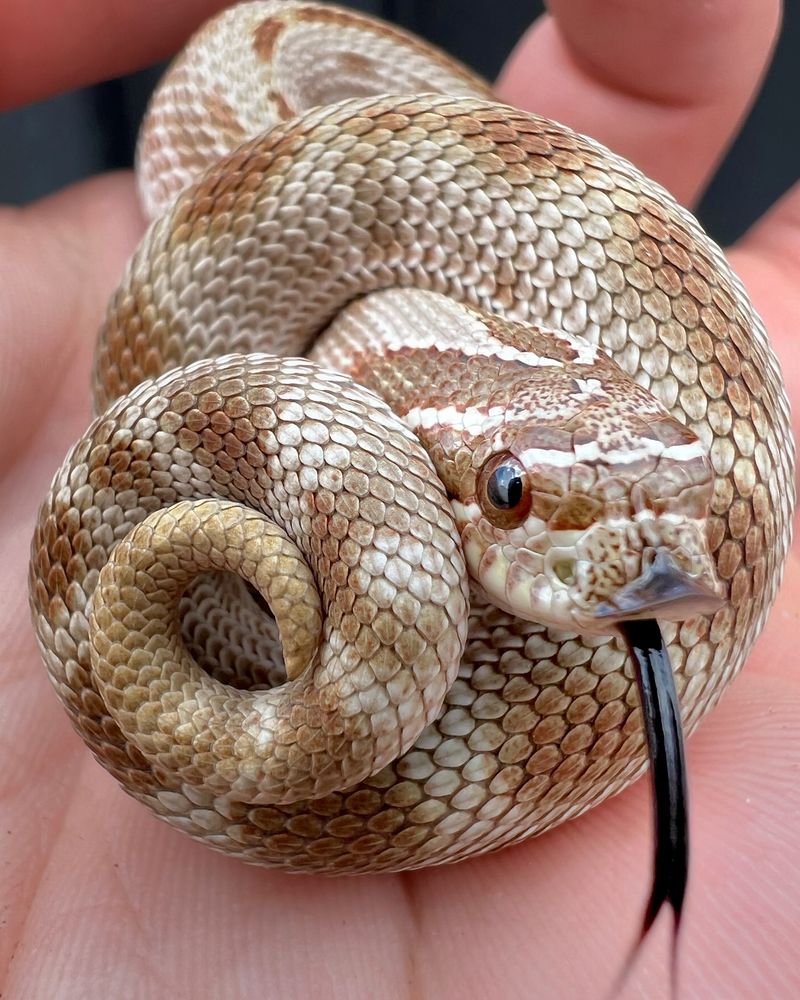
Hognose snakes are easily recognized by their upturned snouts and unique behavior, including dramatic defensive displays like hissing and playing dead.
Found in sandy or loose soil areas, they burrow in search of toads, which are their main prey. Though their antics may seem threatening, hognose snakes are non-venomous and harmless to humans.
By controlling amphibian populations, they help maintain a balanced ecosystem.
If you encounter one, enjoy the show from a safe distance and appreciate its fascinating survival strategies, a sign of a healthy, diverse backyard.
13. Brown Snake
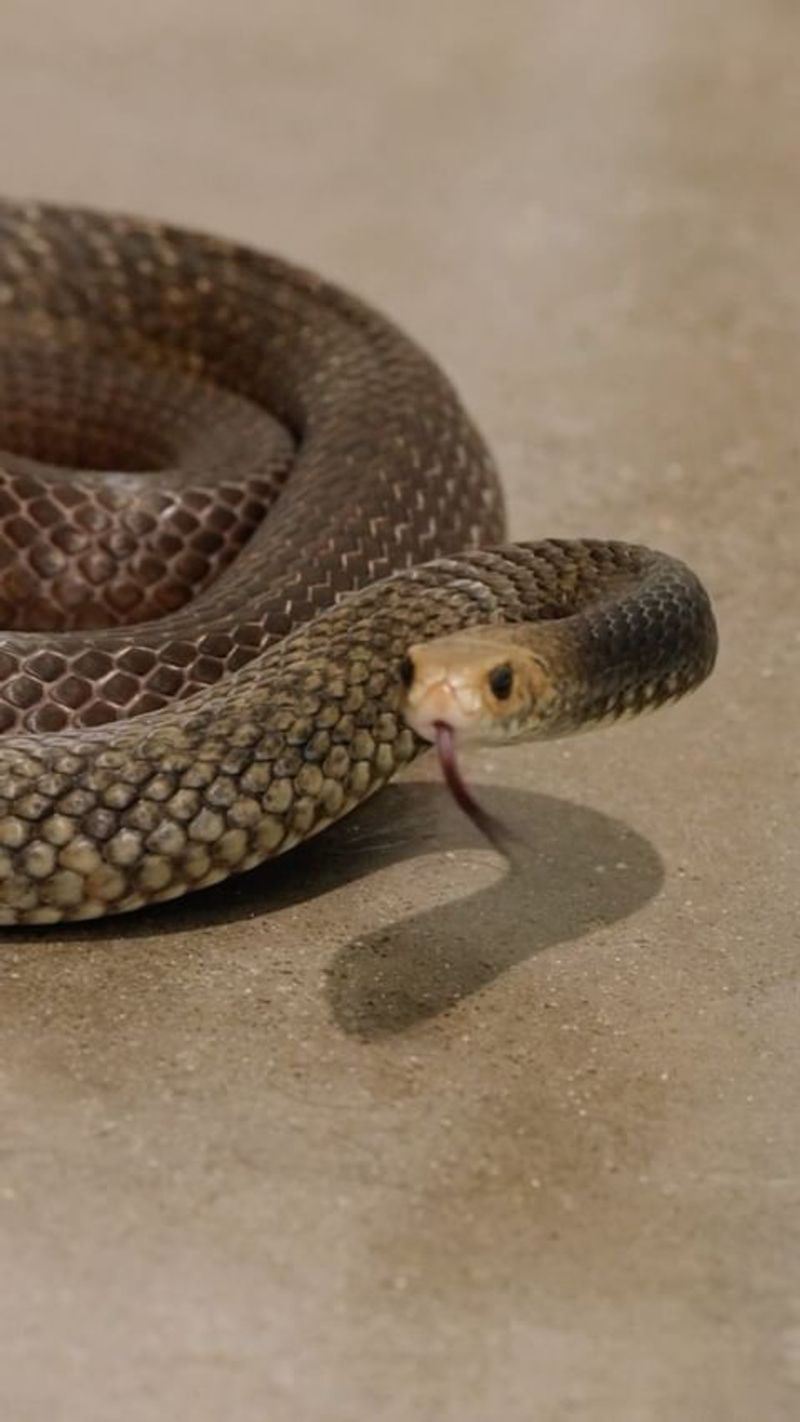
Brown snakes may be small and easily overlooked, but they play a vital role in your backyard ecosystem.
Typically found hiding under logs or rocks in shaded areas, these shy, non-venomous snakes feed on slugs, insects, and earthworms, helping to control pest populations.
While they’re harmless to humans, their presence is a sign of a healthy garden, as they contribute to keeping the insect population balanced.
If you spot a brown snake, it’s best to leave it undisturbed and appreciate its important role in maintaining the health of your backyard.
14. Ribbon Snake
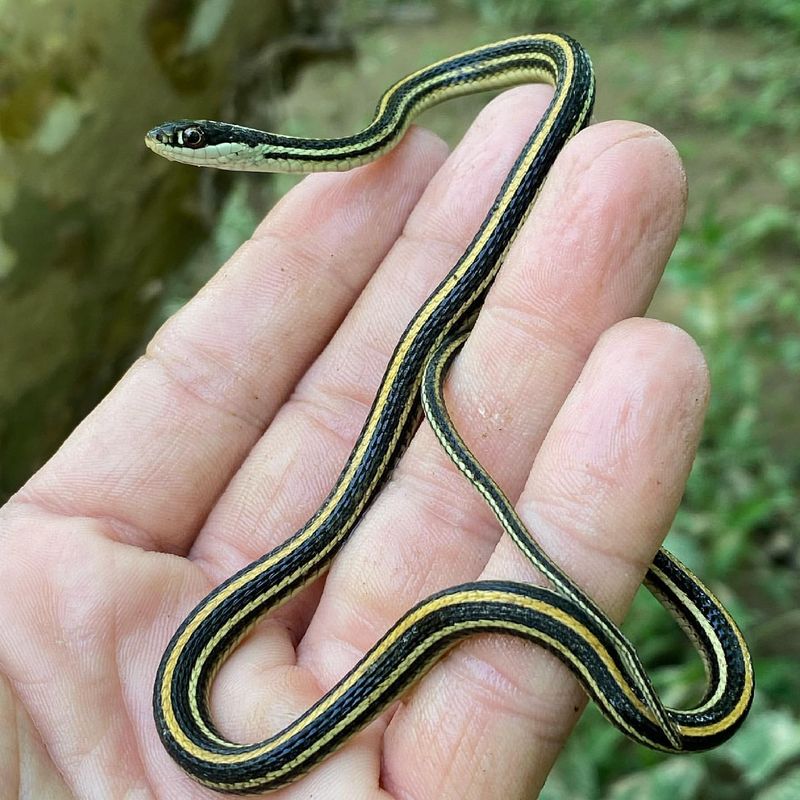
Ribbon snakes are slender and fast, often mistaken for garter snakes due to their similar appearance.
With their thin bodies and distinctive yellow stripes, these non-venomous snakes are a common sight in damp, grassy areas.
Excellent swimmers, ribbon snakes can often be found near ponds or streams, hunting small fish, frogs, and insects to help control these populations.
Though quick to escape when spotted, they are harmless and beneficial to your backyard ecosystem, maintaining a balance of prey species.
If you encounter one, simply admire its graceful movements from a distance and appreciate its role in nature.
15. Eastern Rat Snake
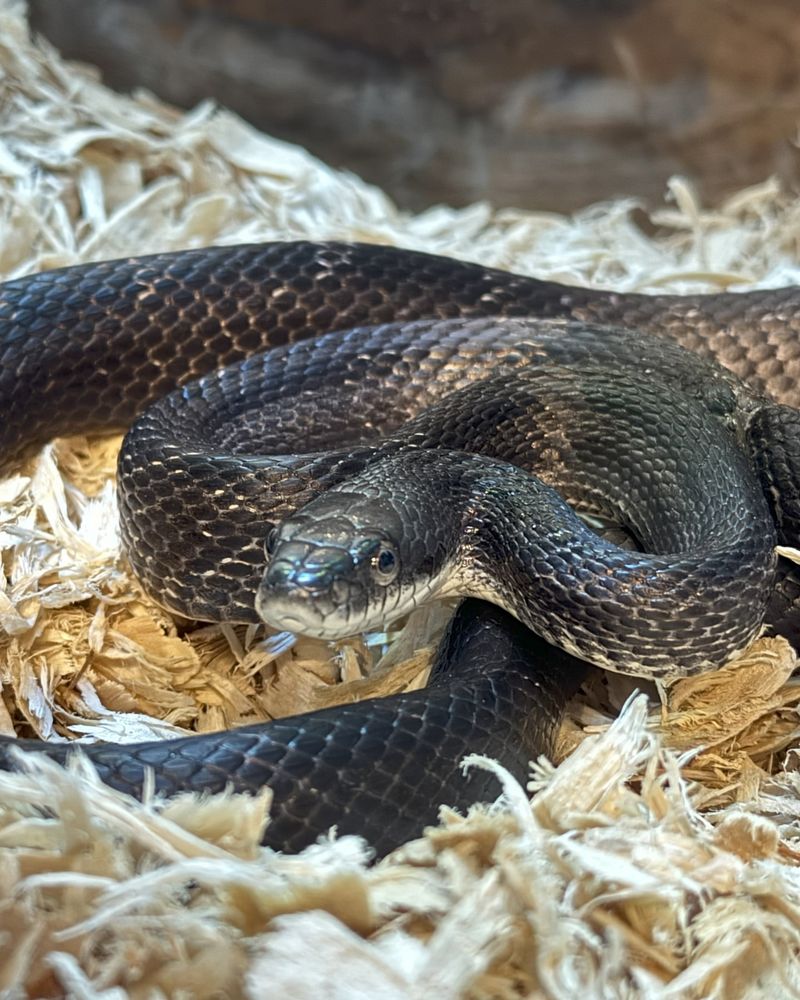
The eastern rat snake is a common backyard visitor, easily recognized by its glossy black scales and impressive size.
Non-venomous and excellent climbers, these snakes are often found in trees or on buildings, where they hunt for rats, mice, and birds.
While their size may seem intimidating, they are harmless to humans and typically very shy.
If you spot an eastern rat snake, it’s best to admire it from a distance and appreciate its role in natural pest control. Their presence helps maintain a balanced and healthy backyard ecosystem.
16. Earth Snake
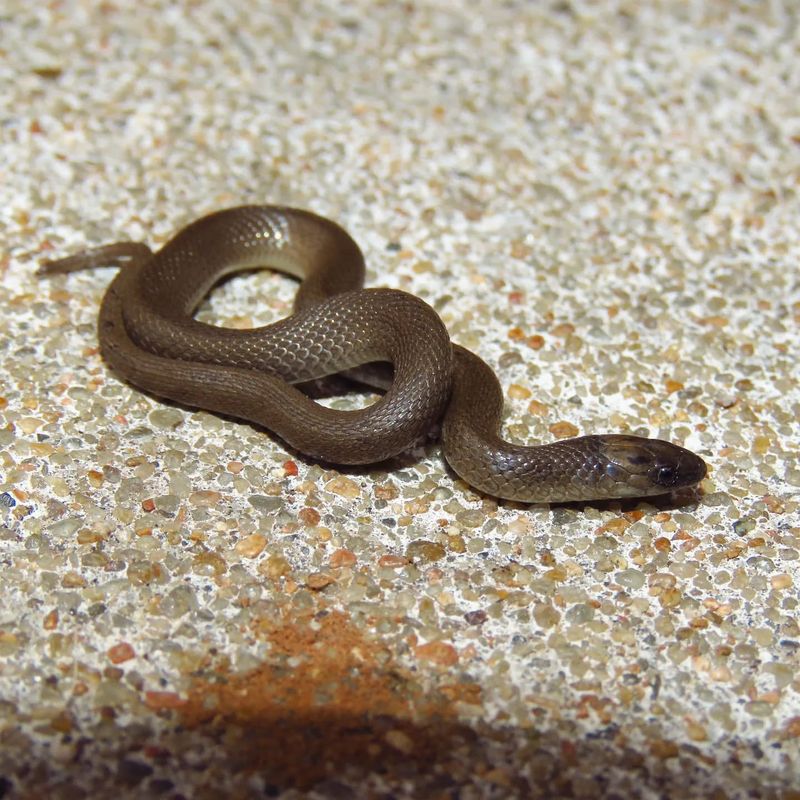
Earth snakes are tiny, burrowing creatures that often go unnoticed due to their small size and underground habits.
These non-venomous snakes are typically found in loose soil or under leaf litter, where they feed on earthworms and small insects.
By controlling pest populations, they play a crucial role in natural pest control, helping maintain healthy soil and a thriving ecosystem.
Though rarely seen above ground, their presence is a sign of a healthy garden. If you come across one while gardening, simply cover it back up and let it continue its important work in the soil.
17. Dekay’s Brown Snake
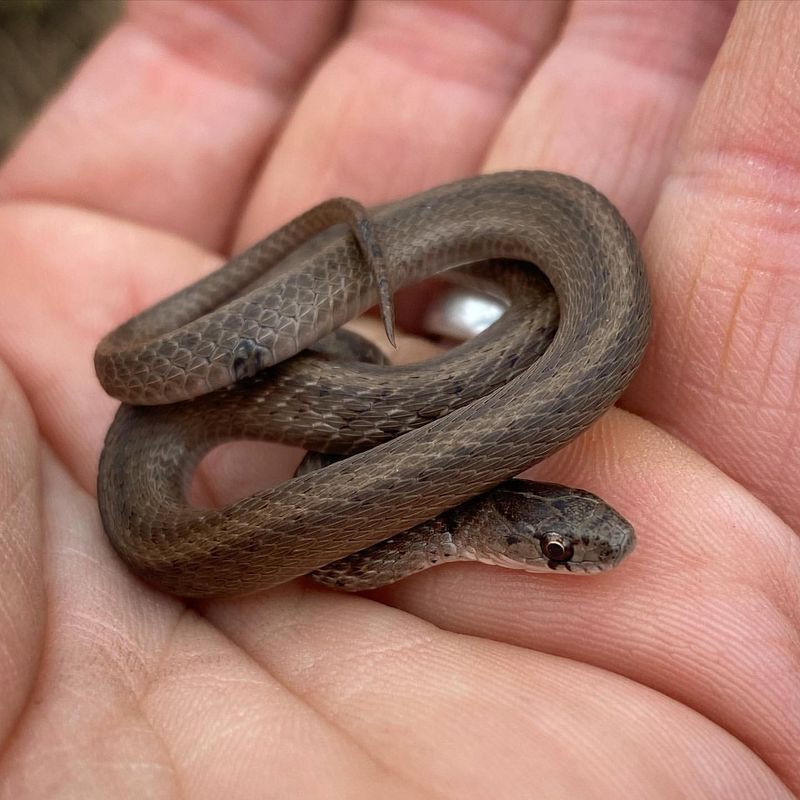
Dekay’s brown snakes are small, unobtrusive reptiles that often blend into gardens and wooded areas with their brown bodies and darker spots.
These non-venomous snakes primarily feed on slugs and earthworms, offering natural pest control for your garden.
Though small, they play a crucial role in maintaining a healthy backyard ecosystem. If you spot one, take a moment to appreciate its presence and the benefits it brings to your garden.
Harmless to humans, Dekay’s brown snakes are valuable contributors to a balanced and thriving environment.
18. Gopher Snake
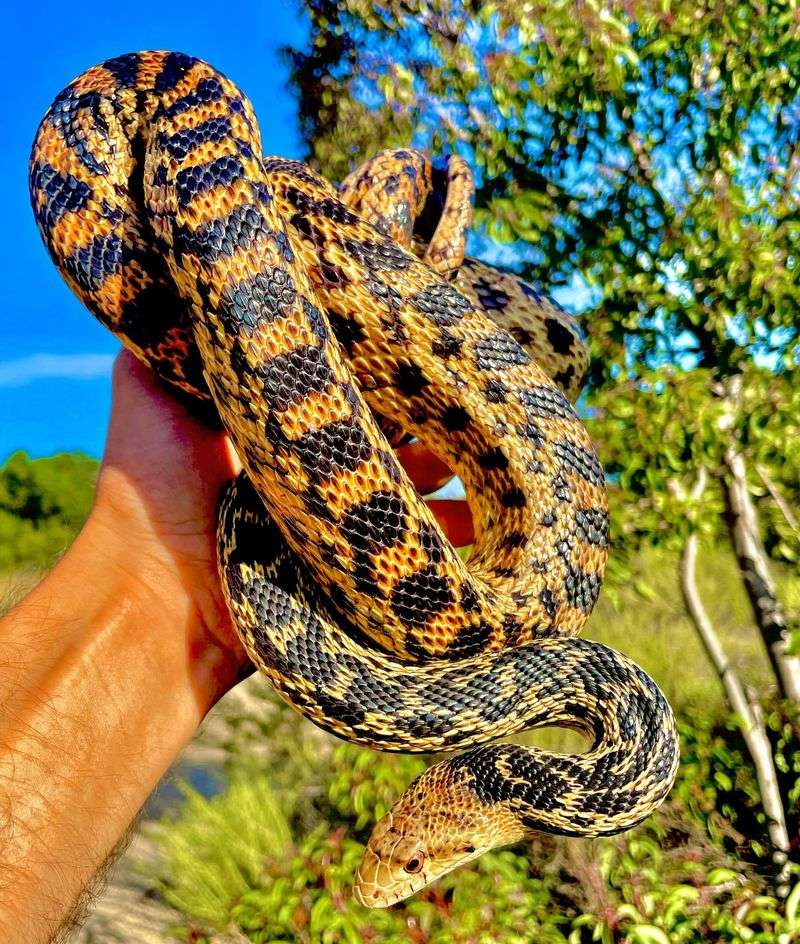
Gopher snakes are large, non-venomous reptiles often mistaken for rattlesnakes due to their similar markings and behavior.
These harmless snakes play a vital role in controlling rodent populations, using their powerful bodies to constrict and subdue prey like mice, gophers, and other small mammals.
Typically found in open areas or along garden edges, they help maintain a balanced ecosystem.
If you spot a gopher snake, give it space and appreciate its contribution to keeping your garden free from rodents. Their presence is a sign of a healthy, thriving environment.
19. Green Snake
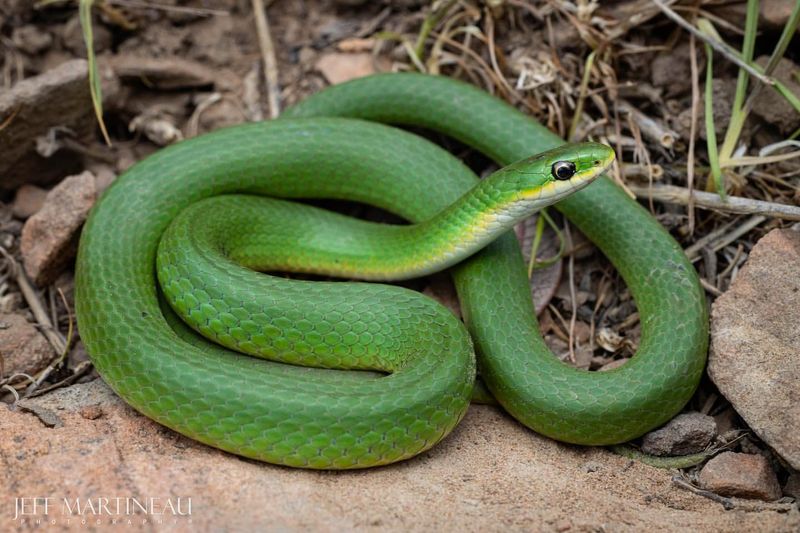
Green snakes are a stunning addition to any garden, their vibrant color helping them blend seamlessly into the foliage.
Non-venomous and gentle, these snakes pose no threat to humans. Often found in shrubs or trees, they hunt for insects like grasshoppers and crickets, contributing to natural pest control.
Their presence signals a healthy garden with a thriving insect population.
While their bright color is a delight to see, it’s best to admire them from a distance and appreciate their role in maintaining a balanced backyard ecosystem.
20. Ringneck Snake
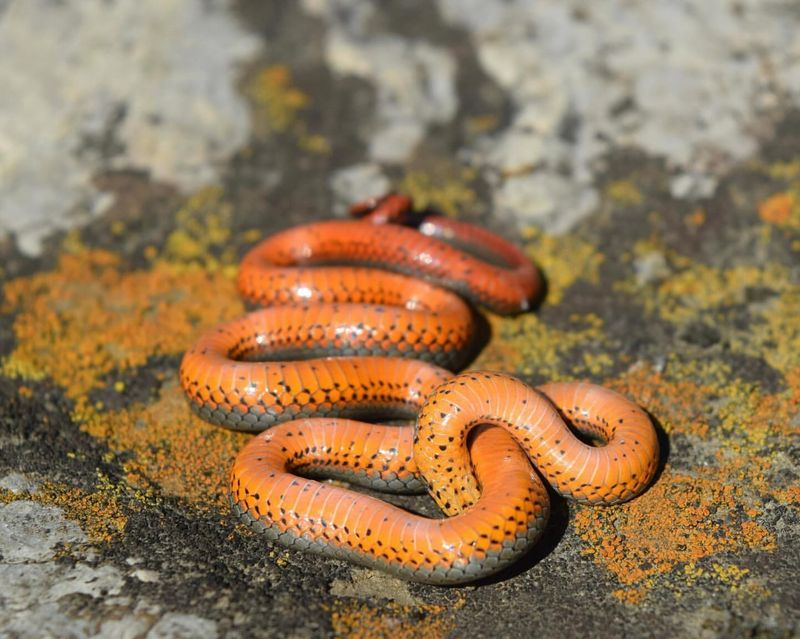
Ringneck snakes are small and secretive, easily recognized by the distinctive orange or yellow ring around their neck.
Non-venomous and harmless to humans, they are often found hiding under rocks, logs, or leaf litter in shaded, wooded areas.
These snakes feed on small amphibians, insects, and earthworms, helping control pest populations in your backyard.
If you spot one, admire its vibrant colors from a safe distance and appreciate its role in maintaining a healthy garden. The presence of ringneck snakes is a good sign of a well-balanced, thriving ecosystem.



